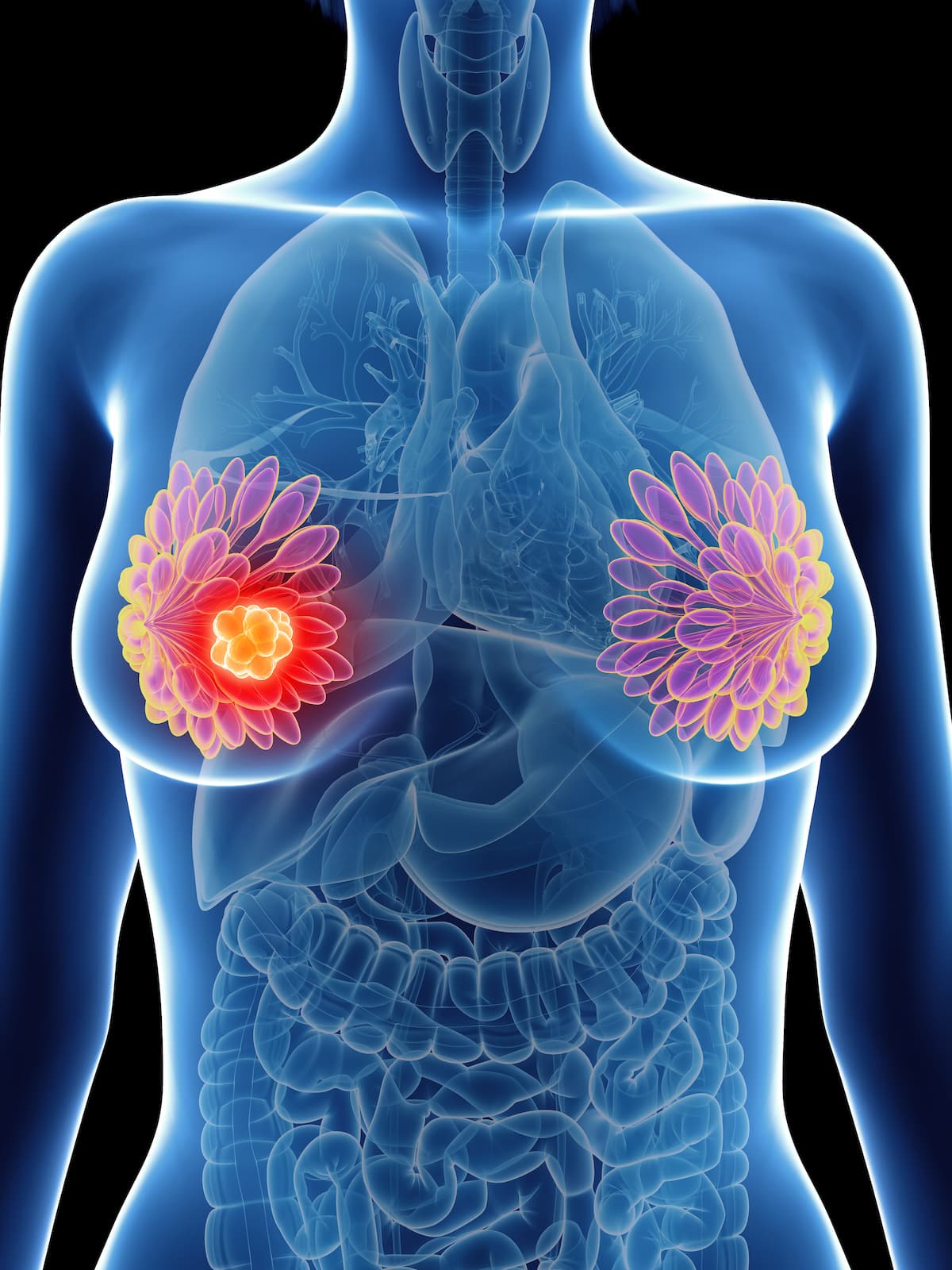MammaPrint Displays Predictive Utility for Chemo in HR+/HER2– Breast Cancer
FLEX study findings show that the MammaPrint Index was predictive of 5-year DRFI for endocrine therapy with or without chemotherapy in early breast cancer.
A multivariate Cox analysis showed a significant interaction between the MammaPrint Index and chemotherapy benefit regardless of age, tumor stage, positive nodal status, or grade.

The MammaPrint 70-gene assay displayed predictive utility for chemotherapy benefit in patients with hormone receptor (HR)–positive, HER2-negative early-stage breast cancer, according to findings from the ongoing FLEX study (NCT03053193) published in JNCI Cancer Spectrum.1
Findings from the study, which collected whole transcriptome genomicdata annotated with clinical data from those undergoing standard-of-care testing with MammaPrint, revealed that the MammaPrint Index was significantly predictive of 5-year distant recurrence-free interval (DRFI) for endocrine therapy alone (R2 = .99; P < .001) and with chemotherapy and endocrine therapy (R2 = .90; P < .001).
Additional findings revealed that chemotherapy provided the greatest absolute reduction benefit, at a maximum of 14.2% and an average of 10.9%, among patients with MammaPrint High Risk 2 breast cancer. The average benefit for High Risk 1 breast cancer was 5.6%, and there was minimal average benefit in the Low or Ultralow risk categories at 1.7% and less than 1.0%, respectively.
Furthermore, a multivariate Cox analysis showed a significant interaction between the MammaPrint Index and chemotherapy benefit (HR, 0.15; 95% CI, 0.02-0.97; P = .047) regardless of age (HR, 0.95; 95% CI, 0.89-1.02; P = .158), tumor stage (T2: HR, 1.08; 95% CI, 0.30-3.97; P = .904; T3: HR, 1.67; 95% CI, 0.35-8.03; P = .399), positive nodal status (HR, 2.62; 95% CI, 0.79-8.63; P = .114), or grade (grade 2: HR, 1.05, 95% CI 0.31-3.58; P = 0.886; grade 3: HR, 0.99, 95% CI 0.10-9.76; P = 0.422). Notably, pre- or peri-menopausal status was significantly associated with chemotherapy benefit (HR = 0.08; 95% CI, 0.01-0.74; P = .025).
“This propensity-score matched population offers statistically robust evidence supporting the benefit of chemotherapy for patients with MammaPrint High Risk cancers. At the same time, it supports foundational results from [the phase 3 MINDACT (NCT00433589) trial] that showed no significant benefit of chemotherapy for patients with MammaPrint Low Risk breast cancer,” Adam Brufsky, MD, PhD, professor of medicine at University of Pittsburgh Medical Center and first author of the study, stated in a press release on the study findings.2 “These findings strengthen the evidence that MammaPrint is a chemopredictive comprehensive genomic test for guiding treatment decisions in early-stage breast cancer.”
The ongoing, prospective, observational, real-world evidence registry trial enrolled patients 18 years and older with stage I to III invasive breast cancer who have undergone standard-of-care MammaPrint genomic testing (n = 1407). Within the nonrandomized population, 859 received endocrine therapy alone, and 548 received it with chemotherapy. Nearest neighbor propensity-score matching was used to balance menopausal status, tumor stage, and lymph node status among the 2 groups.
Of the 1002 propensity-score matched patients—including 501 who received endocrine therapy alone and 501 who received it with chemotherapy—the mean age was 59 years. The majority of patients were post-menopausal (70.1%) and White (79.2%). Additionally, most patients had T1 (37.9%) or T2 (43.7%) tumors, had node-negative disease (70.0%), and had grade 2 disease (51.2%).
The primary end point of the trial was DRFI. A Kaplan Meier analysis was used to calculate empirical 5-year DRFI, and a quadratic polynomial regression was applied to model the relationship between the MammaPrint Index and DRFI. Chemotherapy benefit was calculated as the difference in 5-year DRFI rates between the endocrine therapy alone and endocrine therapy with chemotherapy groups.
“This study marks a milestone in the large body of data supporting the predictive value of MammaPrint in breast cancer, and underscores Agendia’s commitment to providing robust, clinically actionable genomic insights that personalize care and improve outcomes for individuals diagnosed with breast cancer,” William Audeh, MD, MS, chief medical officer at Agendia, said in the news release.2 “It also highlights the growing impact of the FLEX study, which has now enrolled more than 20,000 [patients with] breast cancer and continues to make meaningful contributions to the field of breast cancer research.”
References
- Brufsky AM, Hoskins KF, Conter HJ, et al. MammaPrint predicts chemotherapy benefit in HR+HER2- early breast cancer: FLEX Registry real-world data. JNCI Cancer Spectr. Published August 11, 2025. doi:10.1093/jncics/pkaf079
- Agendia announces publication in JNCI Cancer Spectrum demonstrating that MammaPrint predicts chemotherapy benefit in HR+HER2- early breast cancer using real world evidence from the FLEX study. News release. August 12, 2025. Accessed August 13, 2025. https://tinyurl.com/3ve54mrc